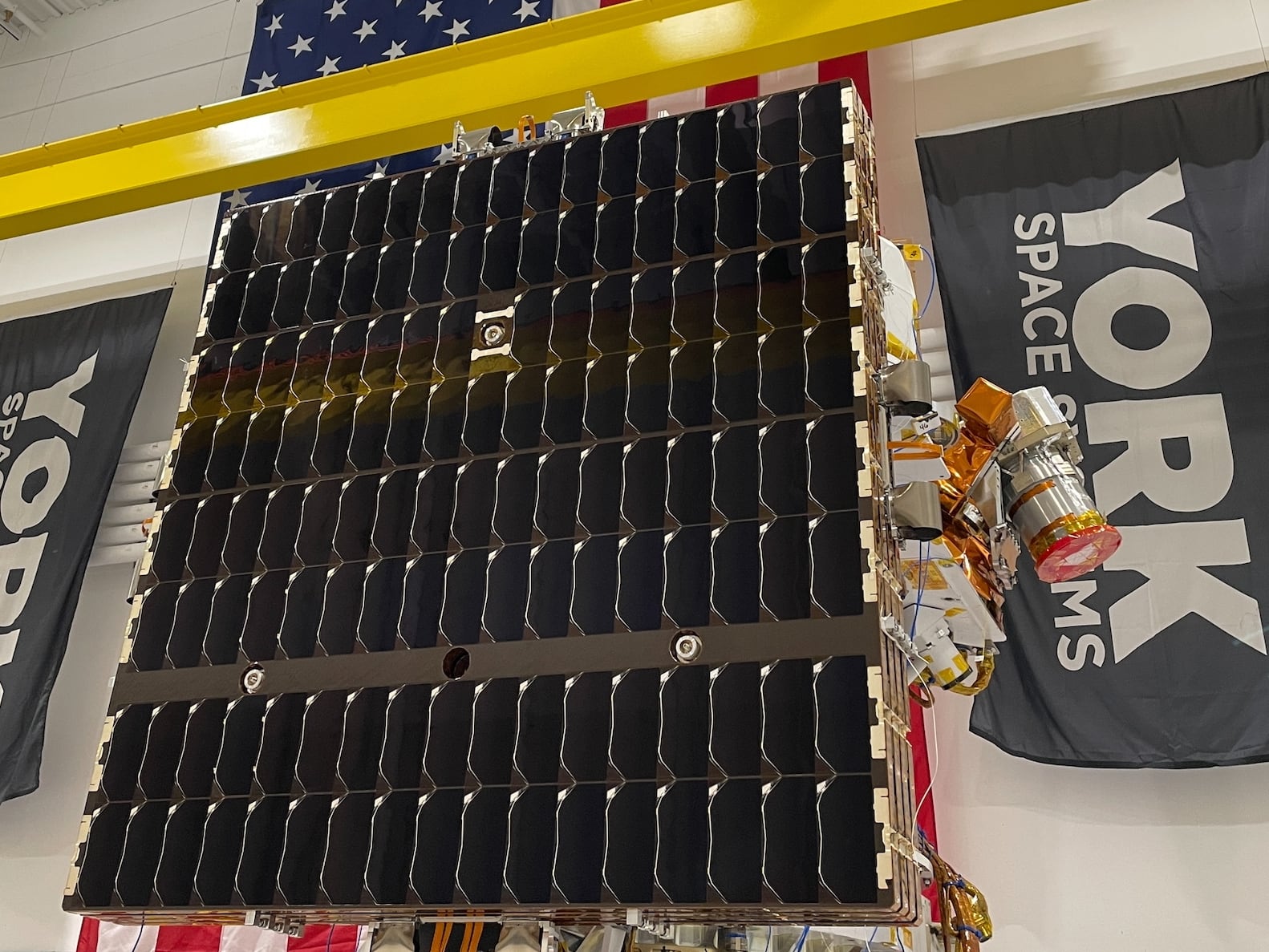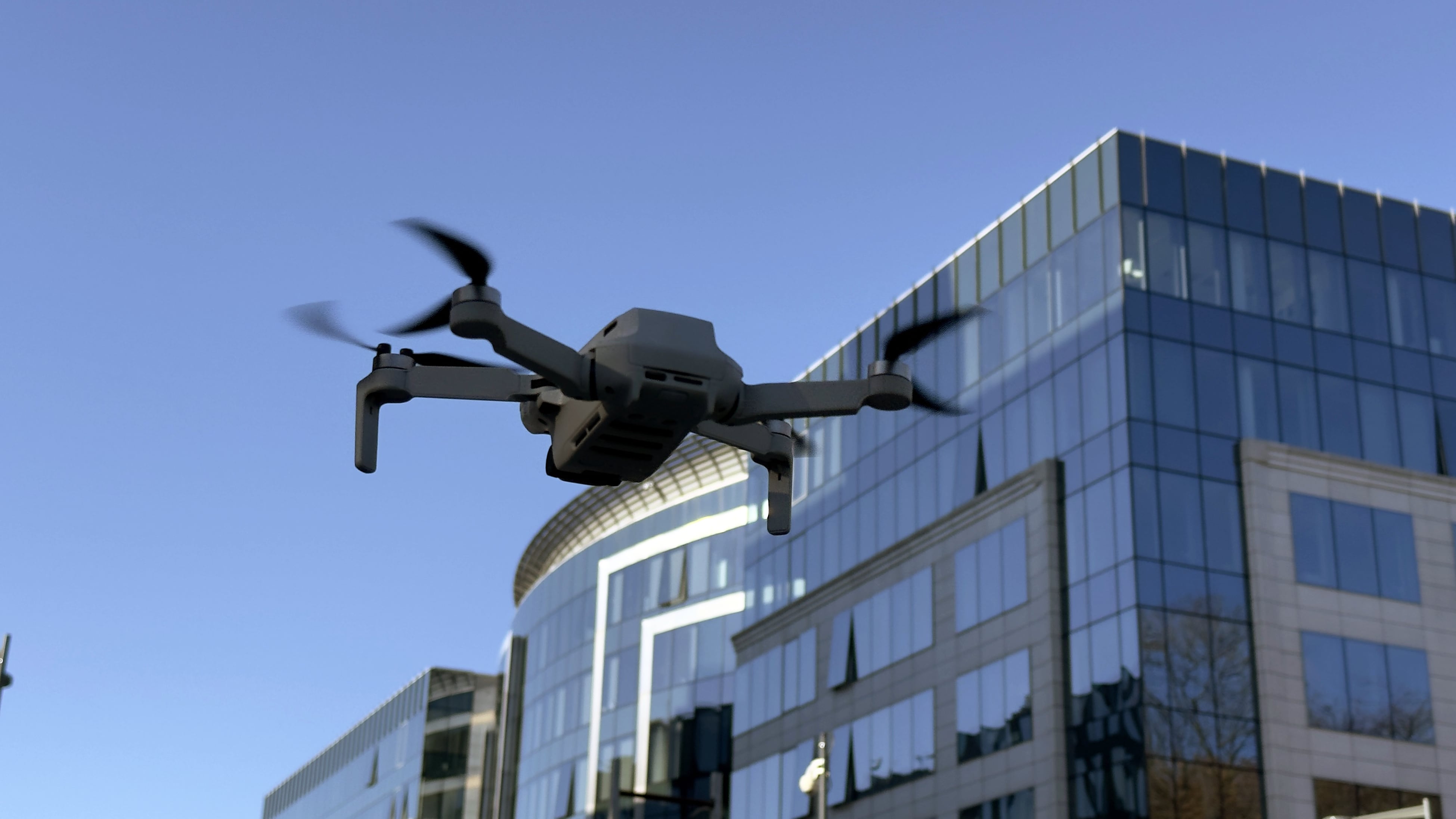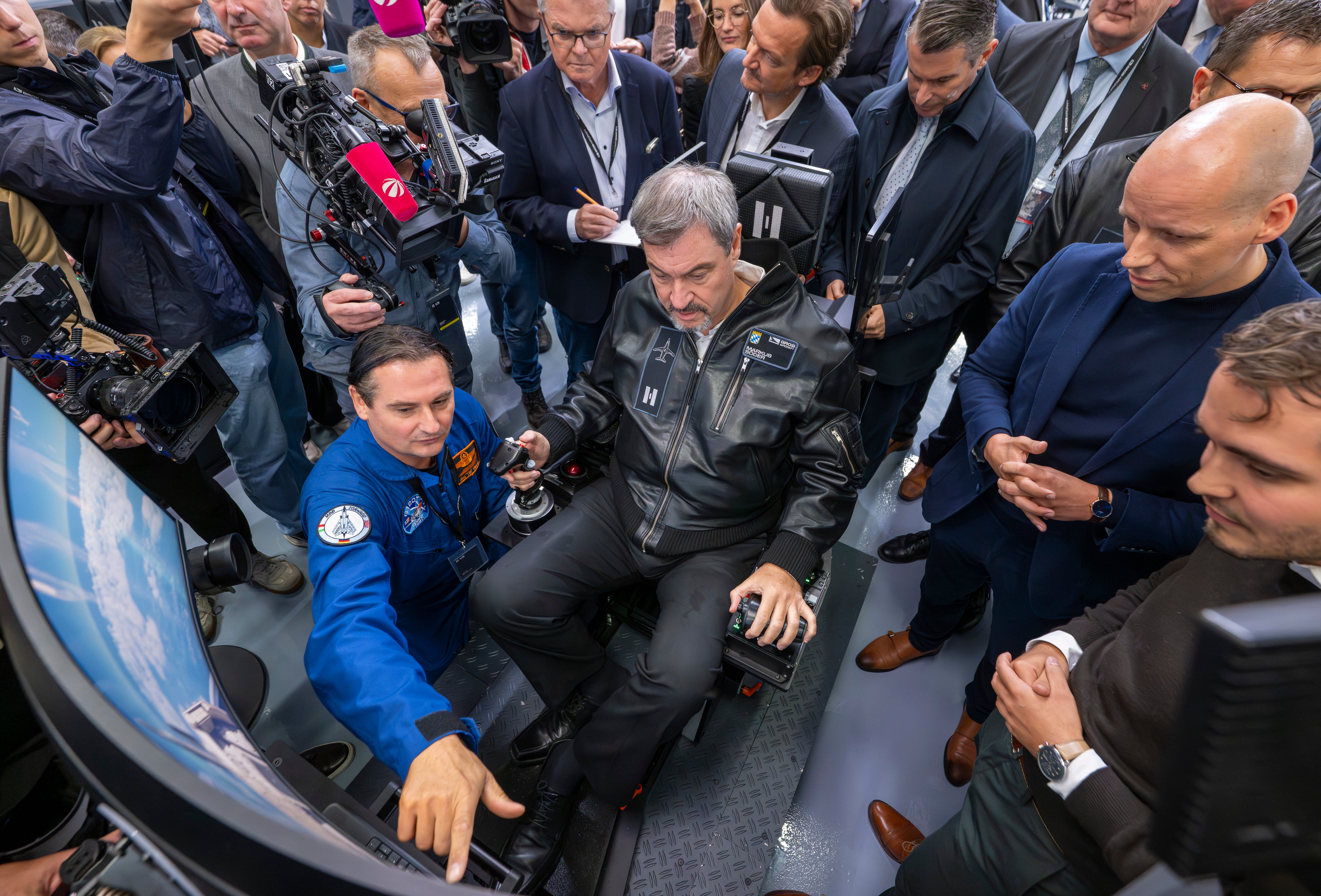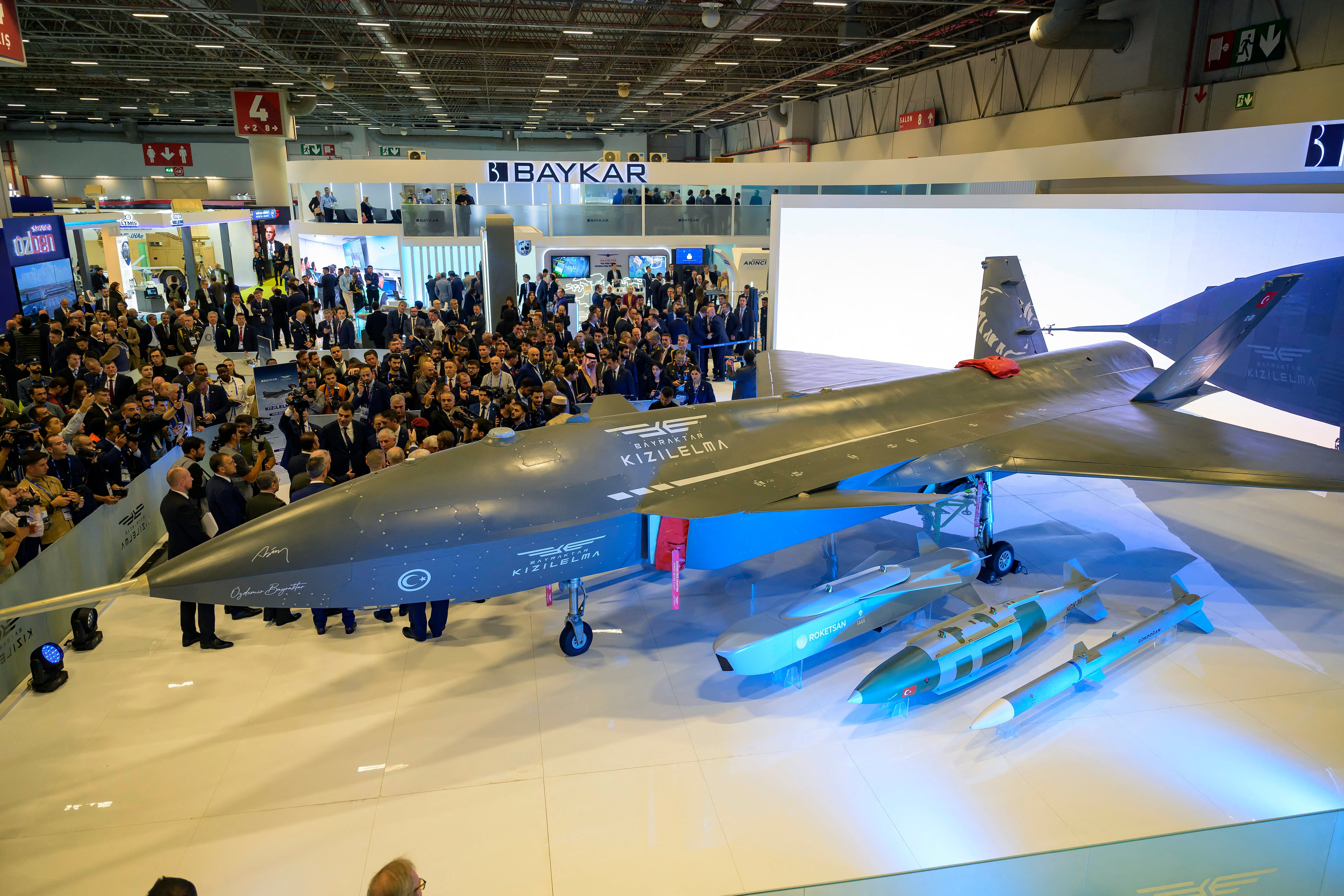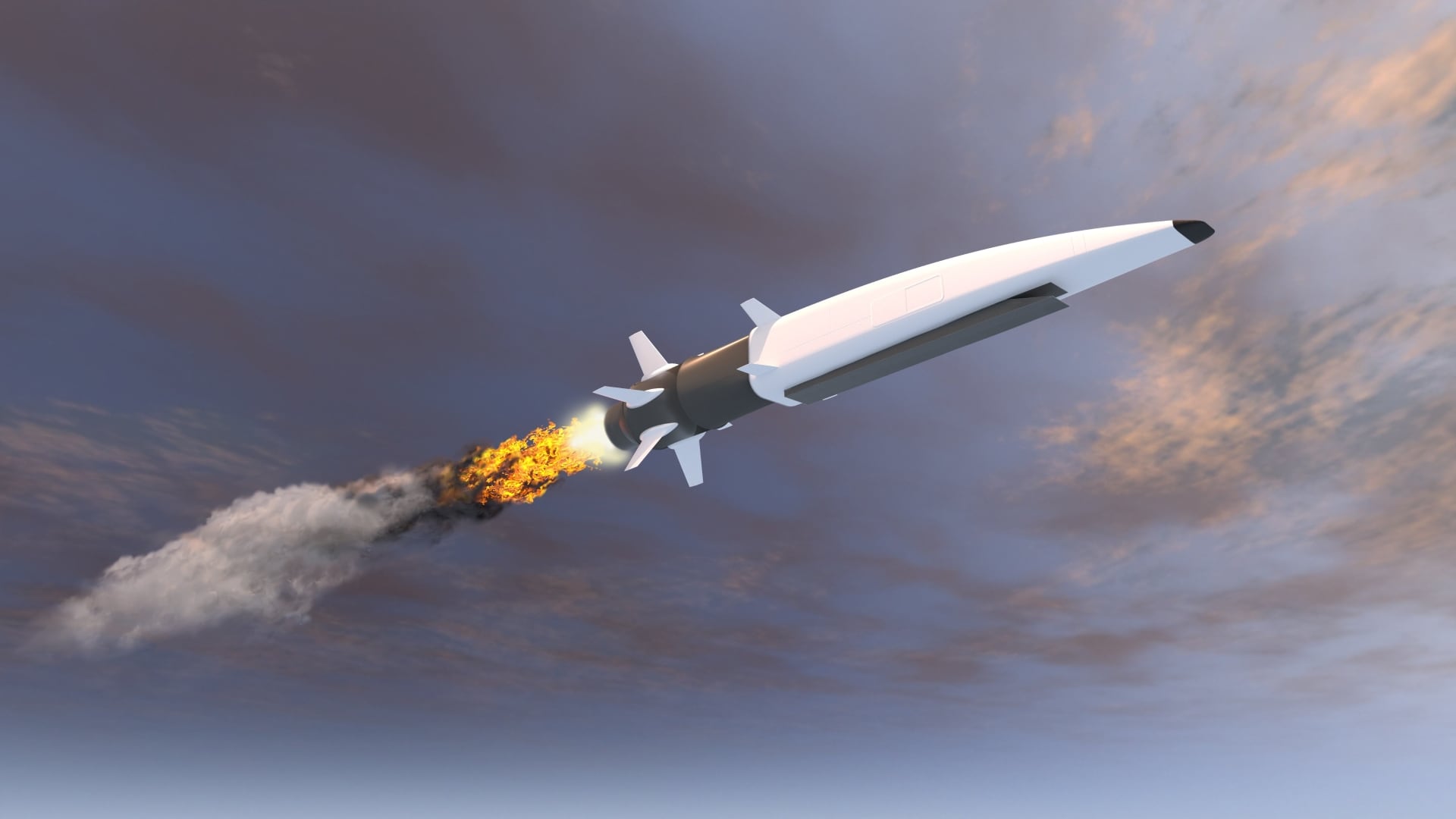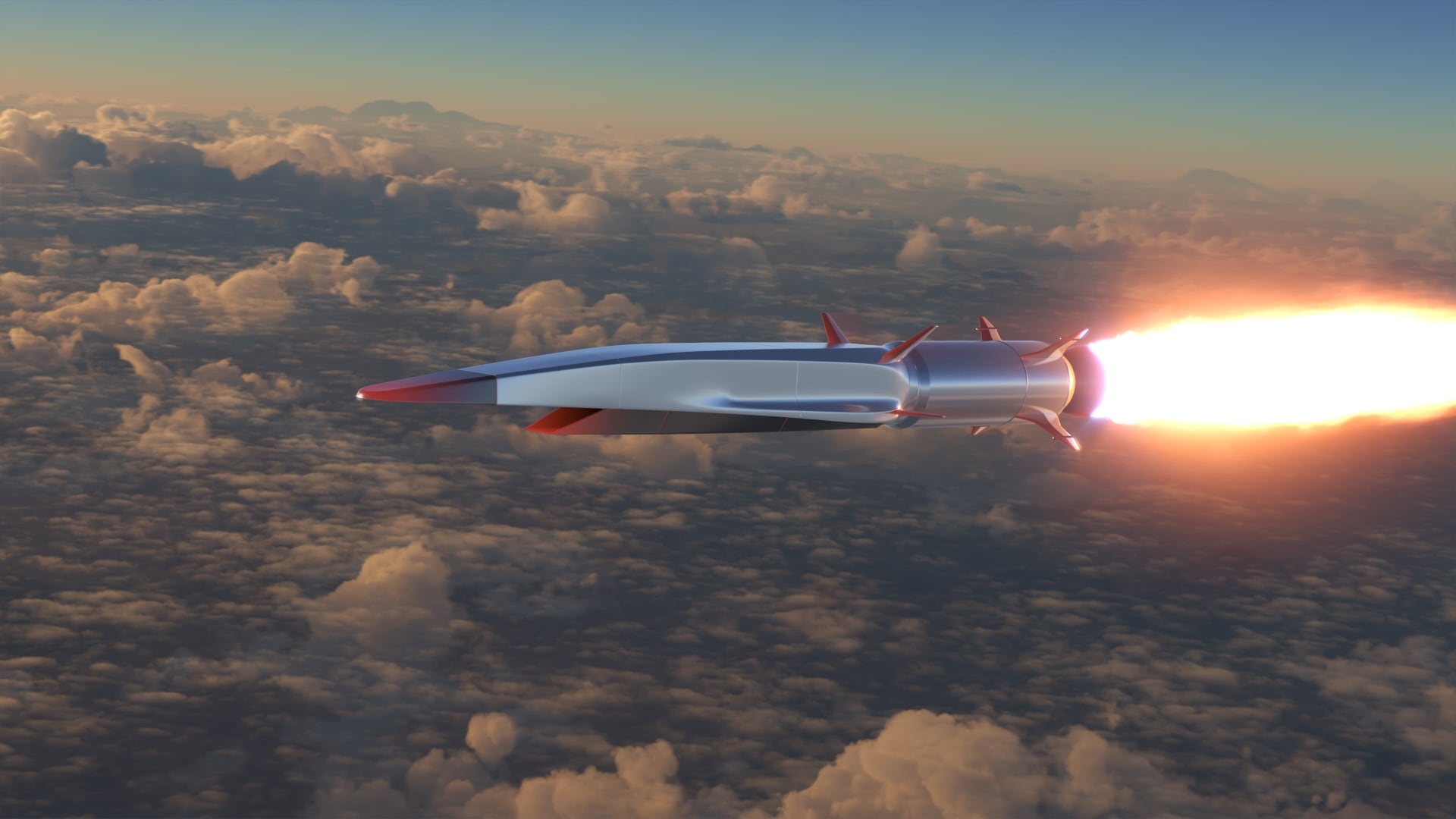The first of 12 satellites built by York Space Systems for a Space Development Agency demonstration mission is ready for launch, the company announced this week.
The spacecraft, dubbed Dragoon, will fly on SpaceX’s Transporter 14 rideshare mission, which is slated to launch June 20 on a Falcon 9 rocket from Vandenberg Space Force Base in California.
York is a key provider for SDA’s Proliferated Warfighter Space Architecture — a mega constellation of small missile warning and data transport satellites in low Earth orbit. The firm is building 136 satellites over three phases of the agency’s Transport Layer. Ten of those satellites have already launched as part of the first phase, Tranche 0, and the remaining satellites will launch in batches over the next few years.
Of those satellites, 12 are part of a $200 million contract York received in 2022 as part of SDA’s Tranche 1 Demonstration and Experimentation System, known as T1DES. The satellites will carry various experimental communication payloads that typically fly in geostationary orbit, about 22,000 miles above Earth. Through T1DES, SDA wants to see whether payloads in low Earth orbit, around 1,200 miles, can provide the same capability.
T1DES was originally planned to launch next year, but last fall SDA requested that one of the satellites be accelerated to fly about six months earlier than planned. So, according to York’s General Manager Melanie Preisser, the company pulled a spacecraft bus from its production line, integrated a prototype payload and tested the satellite in a matter of weeks.
Pressier told Defense News the faster schedule was a challenge but allowed the company to demonstrate its ability to respond quickly to customer needs. Along with assembling the spacecraft in a shorter window, York also acquired the commercial launch service through SpaceX — a step usually led by the government.
“The government paid to accelerate the mission and then we made all the arrangements, contractual arrangements to make it happen,” she said. “I’m hoping that this is a model to accelerate moving out new capabilities for a variety of customers.”
The remaining 11 T1DES satellites are slated to launch in January 2026. Pressier said they are in production today and should be ready to integrate with their communication payloads this fall.
Meanwhile, Dragoon is one of five missions York is schedule to launch this year — the company’s busiest annual cadence to date, Pressier said, and one that’s not likely to slow down any time soon.
Along with Dragoon, the firm plans to launch a classified project called Tyndal. That mission will be followed by another communications demonstration dubbed Bard that is scheduled to launch in July. The company also has two SDA Transport Layer flights — the first in July and a second at the end of the year.
While York’s involvement in SDA satellite development has largely been associated with the agency’s communications layer, the company is eyeing opportunities to build spacecraft to support SDA’s missile tracking and custody layers, which will include satellites that can detect and engage targets.
York has worked internally to demonstrate that its spacecraft buses can integrate the more complex sensor payloads required for those satellites, Pressier said, adding that the Tyndal mission that York is building for a classified customer will demonstrate its utility for custody-type missions.
Courtney Albon is C4ISRNET’s space and emerging technology reporter. She has covered the U.S. military since 2012, with a focus on the Air Force and Space Force. She has reported on some of the Defense Department’s most significant acquisition, budget and policy challenges.
